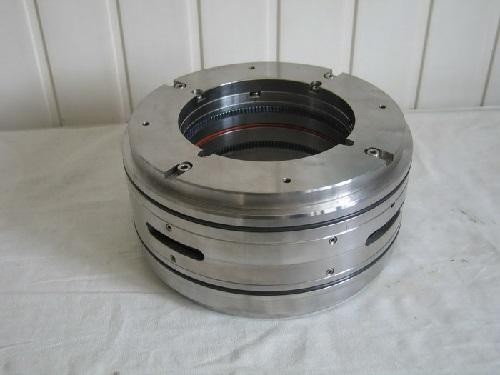Mechanical seals are critical components of rotating equipment in various industrial applications, such as pumps, compressors, mixers, and agitators. They are designed to prevent the leakage of process fluids, such as oil, gas, and chemicals, from the equipment's housing or casing. Mechanical seals work by creating a barrier between the rotating shaft and the stationary housing or casing, preventing the fluid from escaping.
Traditionally, mechanical seals have used a liquid or lubricating fluid to ensure effective sealing. However, the use of liquid-based seals can have several disadvantages, such as leakage, contamination, and environmental concerns. In recent years, dry gas mechanical seal has emerged as a reliable and efficient alternative to liquid-based seals.
A dry gas mechanical seal, as the name suggests, operates without the use of any liquid or lubricating fluid. Instead, it uses a dry gas, such as nitrogen or compressed air, to create a barrier between the shaft and housing. The dry gas is injected into the seal chamber at a higher pressure than the process fluid, which creates a positive pressure differential that prevents the fluid from leaking.
Dry gas mechanical seals offer several advantages over liquid-based seals. Firstly, they eliminate the risk of fluid contamination or pollution, making them ideal for use in applications where the process fluid is toxic, hazardous, or environmentally sensitive. Secondly, they do not require any external cooling or lubrication, which reduces maintenance and operating costs. Thirdly, they can operate over a wider range of temperatures and pressures, making them suitable for use in a broad range of industrial applications.
In addition to their functional advantages, dry gas mechanical seals also offer improved safety and reliability. Traditional liquid-based seals rely on the continuous supply of lubricating fluid to maintain their sealing effectiveness. In the event of a failure or leakage of the lubricating fluid, the seal can quickly deteriorate, resulting in equipment damage and downtime. Dry gas mechanical seals, on the other hand, operate independently of any external lubrication or cooling, making them less susceptible to failure or malfunction.
Another advantage of dry gas mechanical seals is their ease of installation and retrofitting. They can be easily installed in existing equipment without significant modifications or downtime. This makes them an attractive option for equipment upgrades or replacement, as they can improve efficiency and reliability without requiring significant capital investments or production interruptions.
In conclusion, dry gas mechanical seals offer a reliable, efficient, and cost-effective alternative to liquid-based seals. They provide improved safety, environmental compliance, and operational flexibility, making them ideal for use in various industrial applications. As the demand for more efficient and sustainable equipment increases, dry gas mechanical seals are likely to become increasingly popular in the coming years.
